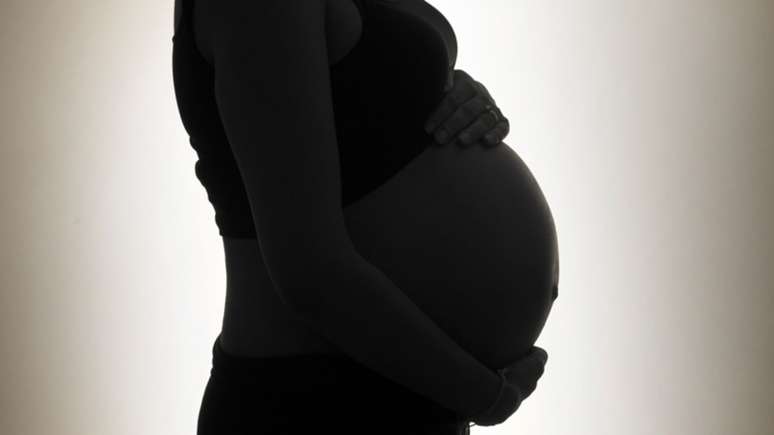Antibodies produced by the pregnant woman after immunization pass to the fetus through the placenta; After birth, immunological reinforcement continues with breastfeeding
Immunization is an essential care that should be part of every pregnant woman’s prenatal care. In addition to avoiding serious health problems at a time when the body is most vulnerable, a woman who keeps her vaccination record up to date protects her baby from important diseases, since she passes her antibodies to the fetus through the placenta in a process known as “passive immunization.” After birth, breastfeeding continues to help strengthen the baby’s immune defenses.
“Newborns have an immature immune system, which is still forming and learning to respond appropriately to the ‘aggressions’ present in the environment outside the womb. Therefore, they are more susceptible to infections caused by viruses and bacteria”explains the scientific researcher of the Butantan Biochemistry Laboratory, Ivo Lebrun. Although infants receive several doses of vaccine during the first years of life, it is not until six months of age that immunity begins to strengthen.
According to the vaccination schedule recommended by the Ministry of Health, pregnant women should receive a booster dose of the Tdap vaccine – known as the triple bacterial vaccine – to protect their babies from neonatal tetanus, diphtheria, and whooping cough. If their doses are not up to date, they should update their immunization schedule against hepatitis B and dT, in addition to receiving seasonal vaccinations from the influenza and Covid-19 campaigns.
“Women who intend to become pregnant soon will be able to include a complete evaluation of their vaccination record in their planning. This will give them the opportunity to update or complete the schedule of vaccinations not recommended during pregnancy, such as MMR and yellow fever.“, advises the medical advisor of the Center for Viral Surveillance and Serological Evaluation (CeVIVAS) and facilitator of operations of the Butantan Scientific Development Center Antonio Jorge Martins.
Transfer of antibodies across the placenta
When a pregnant woman receives a vaccine, her immune system goes into action to fight the “invading agent”, even if the virus or bacteria expressed in the vaccine are not capable of triggering an infectious condition. First, IgM antibodies are produced, which have a nonspecific action and promote an initial attack on the microorganism. About a week later, IgM levels decrease and immunoglobulin G (IgG) comes into action, which carry with them a “specific” recipe capable of neutralizing the antigen. This is the antibody that the mother will transmit to the baby through the placenta.
The embryonic attachment developed during pregnancy is the meeting point of the maternal and fetal circulatory systems: this metabolic exchange allows the development of functions that the fetus is not yet able to perform independently inside the uterus. As in a sort of “transfusion”, the placenta delivers to the baby – through the umbilical cord – oxygen, nutrients and other substances essential for its development; at the same time it also eliminates waste products such as carbon monoxide, uric acid and urea, which are released into the mother’s bloodstream.
The type G antibodies (IgG) present in the pregnant woman’s body, despite having a high molecular weight, are able to cross the placental barrier and reach the fetal circulation. Transport occurs through a process called transcytosis: when a cell captures, moves and secretes a specific molecule. It is estimated that the active transport of immunoglobulin G begins from the 13th week, extending throughout the pregnancy. After six months of life, the baby begins to produce its own IgG.
Vaccination through breastfeeding
One hypothesis is that IgG antibodies produced by the mother’s immunization may also be mobilized into breast milk, thus ensuring immunological reinforcement to the child even after birth. “Since the vascularization in the region of the mammary glands is extensive, one possibility is that the antibody is captured by the maternal blood circulation in a process similar to that which occurs in the placenta. Thus, when the baby breastfeeds, it also receives the antibodies”suggests Ivo Lebrun.
From that point on, the alternative is for these molecules to be passed from mother to child through milk and reach the gastrointestinal tract. “Since early in life digestion in the intestine is not so acidic, the substance would not be degraded, but rather absorbed, falling into the baby’s bloodstream,” completes the researcher of the Biochemistry Laboratory of Butantan.
During the Covid-19 pandemic, a study conducted by the Hospital das Clínicas of the University of São Paulo School of Medicine (FMUSP) indicated the presence of antibodies capable of neutralizing SARS-CoV-2 in the milk of breastfeeding employees immunized with CoronaVac. The samples indicated a high concentration of antibodies after the women received the second dose of the vaccine: the levels remained high even after months of breastfeeding.
Breast milk – mainly colostrum, a thick, yellowish fluid produced by a woman’s body shortly after birth – also has high concentrations of IgA antibodies, a type of immunoglobulin that protects the respiratory and gastrointestinal mucosa from the action of microorganisms.When ingested, these molecules create a sort of barrier that prevents viruses and bacteria from attaching to the tissues of the region and crossing the mucosa. It is as if the tissues were covered with a sort of “varnish” that makes the invading agents “slide” until they are eliminated with the feces.”exemplifies Antônio Jorge.
It is not surprising that breast milk is considered the first “vaccine” of the child. Produced “tailor-made” by the mother’s body, food strengthens the immune system and reduces the risk of obesity, diabetes, diarrhea and respiratory infections. Precisely with the aim of reinforcing the importance of exclusive breastfeeding up to six months of age, since 1992 the month of August has marked the implementation of numerous actions in favor of the theme. In Brazil, the initiative, supported by the Ministry of Health, was called Golden August in reference to the reference standard of food quality.
Source: SP Government
Source: Terra
Ben Stock is a lifestyle journalist and author at Gossipify. He writes about topics such as health, wellness, travel, food and home decor. He provides practical advice and inspiration to improve well-being, keeps readers up to date with latest lifestyle news and trends, known for his engaging writing style, in-depth analysis and unique perspectives.


-1ibeskywkh3z8.png)




![Un Si Grand Soleil Preview: Episode Summary for Friday, October 24, 2025 [SPOILERS] Un Si Grand Soleil Preview: Episode Summary for Friday, October 24, 2025 [SPOILERS]](https://fr.web.img6.acsta.net/img/ab/a7/aba77ee421cfaa6486bd0d6d33453e84.jpg)
